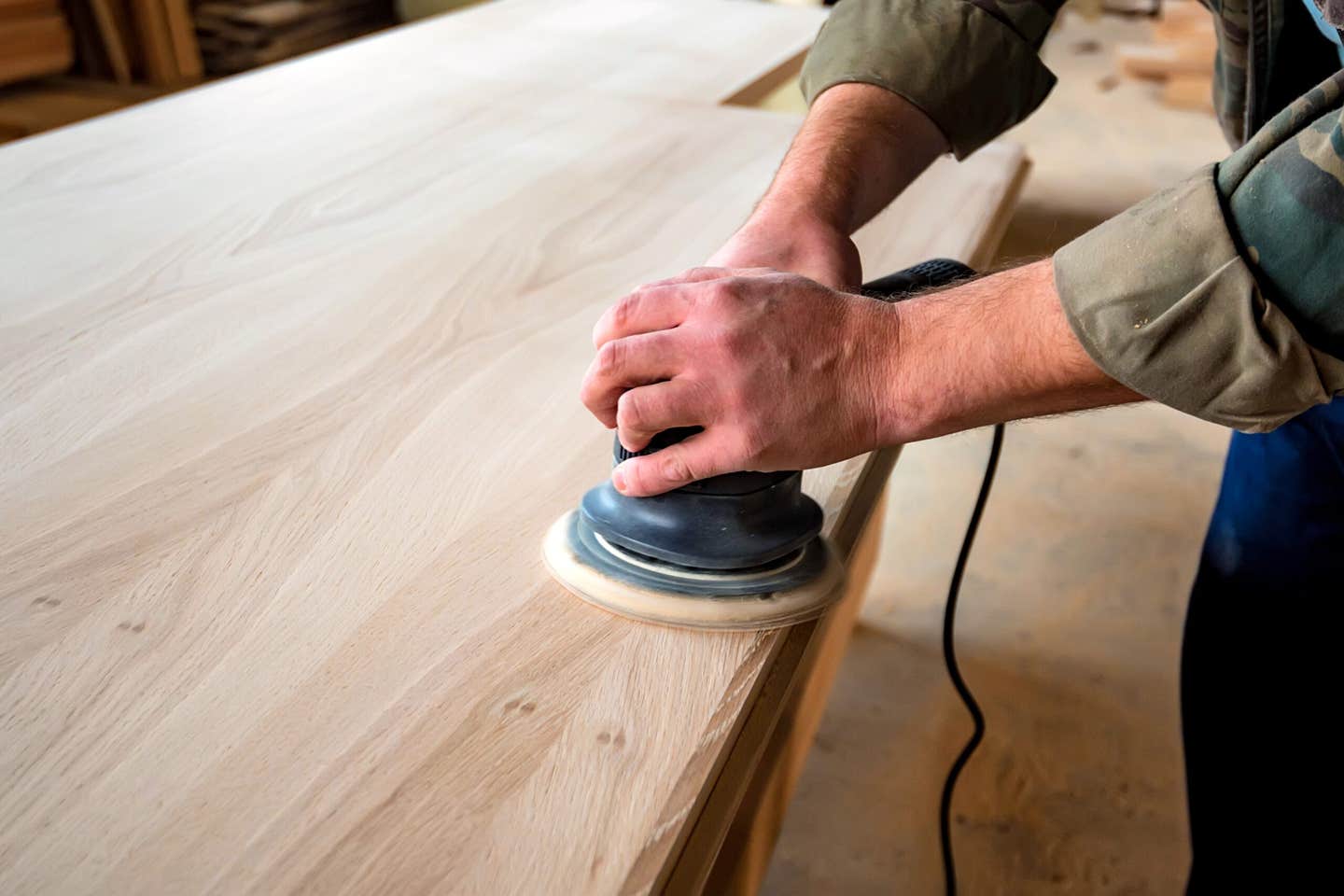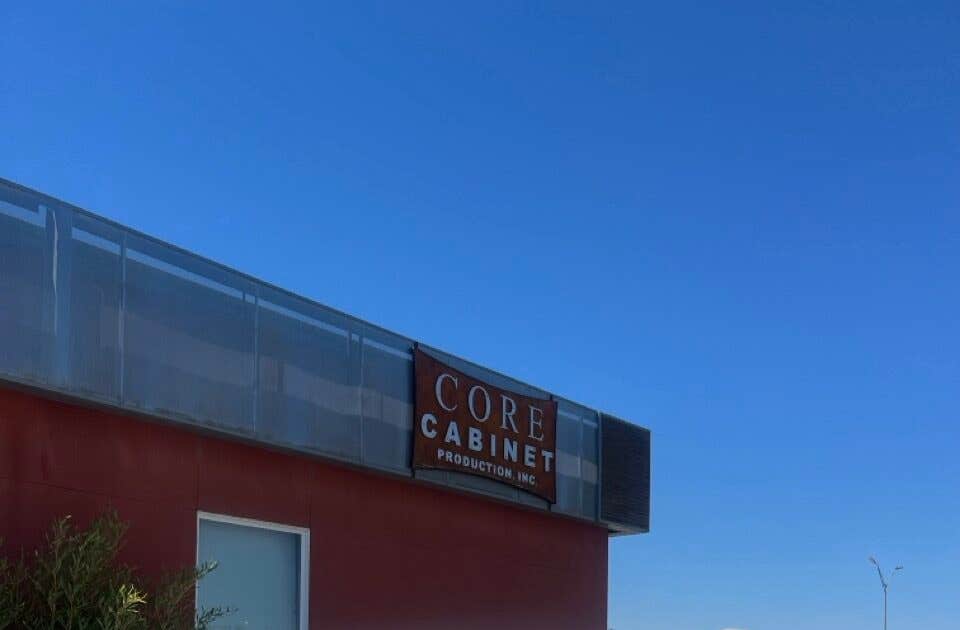Design, Machine and Integrate
Software EXISTS to cover every aspect of A SHOP’s operation
It wasn’t so long ago that the owner of a CNC router thought of software as just two packages, CAD and CAM (design and machining). These still get much of the initial focus, but woodshops practicing lean manufacturing tend to integrate those functions into broader software now.
Enterprise resource planning (ERP) is a way for the woodshop to track and manage business data, while a manufacturing execution system (MES) monitors, connects and controls the machinery and equipment on the shop floor. The machinery is advancing too, as companies such as Biesse and Fanuc lead us toward CNC support robotics that load and unload, and move parts and supplies. More and more, the controls for those functions need to correlate with the basic software that runs the CNC router.
For example, Biesse says that its Selco WN6 ROS (Robotically Operated System) can actually take the place of an operator, so that idle times are drastically reduced and the risk of damage to material due to panel handling by the operator is essentially removed.
Almost all CNC router manufacturers either package CAD and CAM software with the machine, or offer it as an option, or else recommend a certain package. But not all woodshops process jobs the same way, or work in the same materials and have the same requirements. Because of the custom nature of the industry, factory software may not always be the most suitable. Aspects to ponder here include the learning curve and whether somebody on staff is already familiar with certain software, or how the assigned package works with other machines and fits into the production process.
Woodworkers need to explore their options because software is an increasingly important facet of efficiency, and thus profit. Software is a very competitive market, and somewhat overwhelming. A package that seems to offer all the answers may have that jack-of-all-trades syndrome, where it does everything okay but nothing really well. The solution may be two or even three complementary software programs that can work together.
Software is such a critical element that woodshop owners may want to consider involving an expert before settling on a solution. If hiring a consultant isn’t an option, there are several ways to garner recommendations and lists of available programs. Industry organizations such as the Cabinet Makers Association (cabinetmakers.org) or the Architectural Woodwork Institute (awinet.org) offer ways for members to exchange ideas and discuss challenges such as this. And the trade show sites often list their exhibitors by category. For example, one can go to the IWF website (iwfatlanta.com), click on Exhibitors and then on 2020 exhibitors. The entire list is then searchable by product such as ‘Computer Software - Design to Manufacture’.
Following is an update on what’s out there, and what’s new in the CNC software you may already use.
CAD, CAM and more
KCD Software (kcdsoftware.com) offers a very customizable design package that’s tailored to CNC manufacturing. There are no annual maintenance fees and upgrades are free as they become available. It’s easy to try out because there’s a rent for 31 days option. Some features include a focus on lean manufacturing, the ability to design and price on the fly so that changes are easy, and one-button machining. There are packages for building custom cabinets, closets, doors, CNC manufacturing, traditional manufacturing and also Cabinotch integration (an outsourcing option where a shop can direct order and have the job machined and delivered along with hardware, doors and drawers).
KCD also offers a touchscreen option that converts a PC tablet or touchscreen laptop into an onsite sales/design tool. And the company offers seamless data sharing between its software and popular optimization, cabinet shop management or laser measurement software, without the need for double entry. The software comes pre-loaded with digital designs for more than 300 of the most popular door and drawer front styles plus moldings, countertop edging and various industry accessories. A shop can change the door panel sizes, stile and rail widths, colors, textures, countertop edging and much more. The software is parametric and cabinet-smart, so it will automatically change pricing, parts lists, door lists and CNC as dimensions change.
Mastercam (mastercam.com) provides both CAD and CAM solutions for woodshops. Among those are built-in software for nesting, engraving and aggregate tools, plus streamlined multi-axis cutting, trimming, and drilling. A unit named Dynamic Motion is designed to boost tool life and decrease cutting time. The software lets a furniture builder program free-flowing surfaces and geometry in minutes, and then save machining strategies to a library for use on similar parts. It simplifies detail and relief work with Mastercam Art, and translates 2D artwork to 3D machinable pieces quickly and easily.
Hexagon’s Manufacturing Intelligence division released Version 12 of Cabinet Vision design-to-manufacturing software. The program can create shop drawings, generate cut and material lists, do bids and optimize material. The new version features an all-new connection manager that controls and automates machining that occurs where two parts meet, such as RTA fittings. Version 12 also introduces a new direct connection to the Leica 3D Disto laser measuring system.
Hexagon’s latest release of its AlphaCam CAD/CAM software speeds up how jobs that require several processes are managed. A new job type has been introduced in the 2020.1 release of that program, called Multiple Process Jobs. It makes it simpler to create jobs and orders in the Automation Manager for jobs that need to be output to more than one machine, or that require secondary processing at the same machine. And Hexagon’s Workplan software addresses machine events, monitoring, CMMS (computerized maintenance management system), CAM supervision, workflow and part traceability.
Simpler solutions
Mozaik Software (mozaiksoftware.com) offers inexpensive and complete CNC software options that include Mozaik Design, which provides the tools needed to design kitchen, bath, and closet custom layouts. Mozaik Manufacturing is design-to-manufacture software that includes all the features of the Design program and also generates door lists, drawer lists, cut lists, material requirements, hardware requirements, part or cabinet labels and other essential manufacturing details. This product is recommended for traditional non-CNC custom cabinet shops and closet fabricators.
Mozaik Optimizer uses cut lists to quickly estimate material requirements and optimize parts for manual table saws. And Mozaik CNC Complete has everything a woodshop needs to run a flat table CNC router. It includes all the features of Design, Manufacturing and the Optimizer, as well as true-shape nesting, G-code creation, post processing (for most popular CNC Routers), CNC MDF doors and CNC dovetail drawers.
Mozaik’s CNC Operator is a stand-alone, real-time nesting solution designed to be used live at the CNC router. It lets the woodworker remake parts, cut and paste parts, re-nest sheets, add sheets, generate G-code on the fly, and label parts. For shops using Sketchup, Mozaik also offers ArielVision which is a low cost, easy-to-use rendering plug-in that can create near photo-quality renderings.
Kitchen Design from CabMaster (cabmastersoftware.com) provides the tools to create a 3D photo quality rendering for presentation to clients, and the Kitchen Manufacturing software features full integration with ATP software to ‘talk’ to your machine. EzyNest comes standard with true shape nesting, automatic tool paths, and a touchscreen labeling interface. A variation, EzyNest Wood, adds a full suite of CAD tools, including automatic clean-up of imported files and 3D engraving using V-groove tooling. Another upgrade, EzyNest Pro, adds 3D design tools and the ability to mix and match 3D, 2D, and bitmap artwork that is either imported or created in the program.
Cabinet Pro (cabinetpro.com) offers software packages that support CNC routers using any variation of G-code. The company’s Cabinet Pro CNC produces code directly from the cut list and panel optimized parts. Its user-defined setup allows automatic machining based upon a shop’s preferences, and its Smart CNC rules will automatically place machining for adjustable shelf holes and dado cuts, or for dowel holes in vertical and horizontal partitions. Its ability to locate drawer guide holes, hinge plate holes and so on means that it can support various methods such as dowel and blind dado construction, and the operator can switch from one style of CNC machining to another by simply changing construction methods. The CAD element lets a woodworker design casework in 3D, and then all of the appropriate CNC machining is automatically inserted. It works with modular or custom face frame or frameless cabinets, and offers the ability to match the grain and grain direction of doors and drawers on a given panel.
Door Pro CNC, also from Cabinet Pro, lets a woodshop create machining for a single door style, and it will then shrink or enlarge the machining based upon door dimensions. It will place the pull and hinge holes, grain match doors and drawers if the doors are drawn as part of a cabinet, optimize all door panels according to user preferences, and can incorporate multiple or single door styles on a sheet of stock. It supports the shaping of MDF doors including cathedral and rounded top rails, and it assigns a unique tracking number to each part of a door. The woodworker can select a panel, frame or edge detail at the order entry stage, and have the corresponding machining occur automatically. The program writes CNC code directly to the router without requiring any other software.
Cabinet Solutions (cabinetsolutions.net) offers a comprehensive suite that handles estimates, 3D rendering, cabinet customization, panel optimizing and cut lists. There are two different 3D views that a shop can show to customers. The basic 3D is a quick view of how a kitchen will look from a variety of angles and can be re-drawn on the fly. The Enhanced 3D view can include various wood species and color changes, crown moldings and easy room rotation. The estimating unit can calculate by the lineal foot, or break the project down into material, labor and profit. The design software will handle various construction methods and has a library of door styles.
Cabinet Solutions’ CNC Exporter can go from designing a kitchen to setting up tooling information, to using EnRoute (required) for nesting parts and creating G-code. Exporter even has a feature for adjusting material thickness by up to .05” to allow for variations due to factors such as swelling or contraction due to moisture in the air.
Microvellum’s design platform is built on AutoCAD and includes abilities such as project cost planning and estimating, flexible customization, easy standardization, and streamlining the manufacturing process with a single software package (microvellum.com).
Other resources
Vectric Ltd. (vectric.com) publishes Aspire and VCarve Pro. The company’s new Version 10 includes a Photo VCarving toolpath strategy that will convert photographs and images into toolpaths producing stylized engraved designs and a new tool database that will manage machines, materials and tool names.
Eurosoft Inc. (eurosoftinc.com) offers BlueCell, an optimization, nesting and automation software that can explore hundreds of thousands of solutions in just a matter of seconds.
Global Shop Solutions (globalshopsolutions.com) is now offering free downloadable product sheets that explain each of its ERP software units. These can collect, save, organize and ultimately use data from all of the different activities in a woodshop business. The data then informs decisions, so a shop can track and better manage jobs, materials, staff and other resources.
EagleEyeERP is a new program from RSA Solutions (rsasoltions.com) that earned a Visionary New Product Award at AWFS. This is a management suite that was designed specifically for cabinet, fixture and closet manufacturing. It works with Cabinet Vision and most commonly used casework design programs.
TopSolid (topsolid.com), a provider of CAD, CAM and ERP solutions, recently signed a partnership agreement to use ModuleWorks 5-axis machining components to enhance the performance and functionality of its 5-axis solutions. The new technology will be available in 2020 for selected TopSolid users and is scheduled for general release in 2021.
Virtual Zero Unlimited from Next Wave Automation (nextwaveautomation.com) is software that lets a woodworker map the entire surface of raw material (a board, sheet stock etc.) by registering an unlimited number of reference points. The program then uses these points to auto-adjust the G-code to conform to the actual surface of that material.
This article originally appeared in the May 2020 issue.







